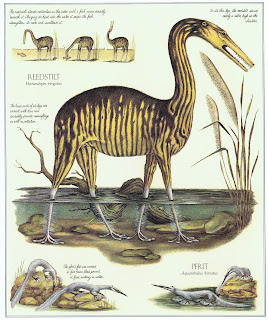One of the ways words can change meaning over time is by broadening (also called widening) or narrowing what they refer to. Often such meaning changes reflect interesting social changes that affected the way speakers used words. Here is a selection of English words whose meanings have broadened or narrowed over time.
• Verb originally meant simply "word," as in verbal or verbose. Around the fourteenth century it narrowed to mean only those words indicating action.
• Old English deor, which developed into our modern word deer, originally meant "animal" (just like its German cognate Tier). Apparently it was with the rise of the hunt in feudal society that people started meaning just the one specific animal when they said the word deer.
• In the same way the meaning of hound narrowed from any dog to dogs used in the hunt. (Again, compare with German, where Hund remains the general term for all kinds of dogs.)
• But here's a funny thing. Dogge has gone in the opposite direction, broadening its meaning by around 1000 from a specific English breed to replace hound as the general term for domestic canines. What caused hound and dog to switch their level of specificity?
• A number of words that began as specific words for the young of animals have over time broadened their meanings to become the general term for the entire species or group. Is this because people have a tendency to talk baby talk about animals? Some examples include bird, chicken, and pig. The language seems to be mid-change with kitty and bunny, which are often used to refer to adult animals as well as young.
• Another narrowing occurred with the word starve, which once meant "to die." After a shift to mean a long, drawn-out death it came (around the fifteenth century) to refer primarily to suffering from extreme cold or lack of food. Chaucer refers to someone in peril of "starving for hunger," a common construction for centuries. But if that sounds redundant, just remember that now people specify when someone "starves to death," which would have seemed terribly redundant in older English.
• Speaking of food, that's the original meaning of the word meat: any kind of food. You can see that meaning in a number of places in the King James Bible, such as "I have given every green herb for meat" or "Bring a meat offering of a tenth deal of flour mingled with the fourth part of an hin of oil." Not until the fifteenth century does meat start referring to flesh specifically, and the older, more general meaning still survives in a few words, such as mincemeat pie, which is sometimes flesh but more often nuts or fruit. But just how narrow is the meaning of meat? What about the idea that Catholics shouldn't eat meat on Fridays… but that flesh of fish doesn't count? Is meat only mammal flesh? Any flesh but seafood? Or the flesh of anything in the animal kingdom? Like many words, meat manages to keep various levels of meaning for different situations.
[Pictures: The Stag Hunt, woodcut by Lucas Cranach the Elder, c 1506 (Image from Wikimedia Commons);
Detail from Hunting Party in the Lörs Forest, woodcut by Michael Ostendorfer, 1543 (Image from the National Gallery of Denmark).]






















